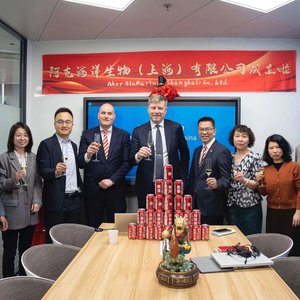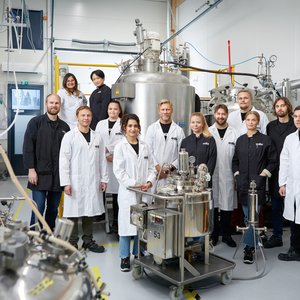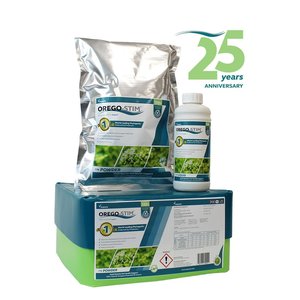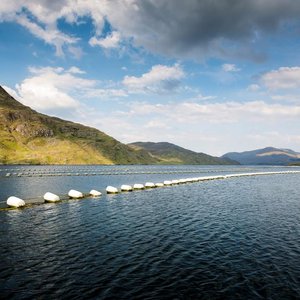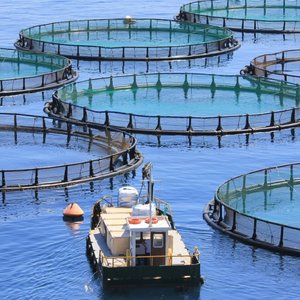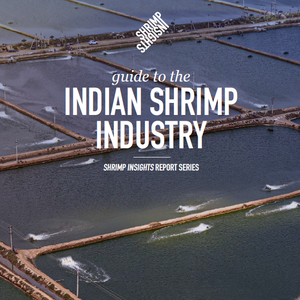Thai Marine Shrimp Production Expected to Reach 500,000 Tons in 2007, Conference Will Hear
Dr. Juadee Pongmaneerat
Cultivated marine shrimp have been an important source of protein in Thailand for many years and the country has been an exporter since 1991.
In 2005 and 2006 total production of marine shrimp was about 380,000 tons and 410,000 tons respectively, and in 2007, that figure is expected to reach over 500,000 tons, Dr. Juadee Pongmaneerat, senior expert in fishery product and inspection, Department of Fisheries, Bangkok, Thailand will tell delegates when she opens the Aquafeed Horizons Asia Conference in Bangkok.
Thailand however has not escaped the devastating disease outbreaks suffered in shrimp farms world wide: WSSV, TSV and IHHNV have taken their toll. This and the uncertainty of healthy brood stock supply, has seen the country make a dramatic shift from black tiger shrimp (P.monodon) to the white shrimp (P. vannamei) , which today accounts for 95-98 per cent of production.
Other major aquacultured species in Thailand are sea bass, grouper, green muscle, blood clam, oyster, tilapia, catfish and giant fresh water prawn. There are 155 registered aquafeed mills in the country including premixed, supplemental feed, concentrate feed and complete feed.
Dr. Juadee will update the conference on the country’s aquaculture and aquafeed status and explain the steps the Department of Fisheries has established to develop a strategy and policy for sustainable aquaculture and to enhance the safety and quality of aquatic food.
The conference will have a strong technical emphasis: delegates will discover the very latest innovations in feed additives, such as pheromone attractants and palatability enhancers. Ingredients to add to the aquafeed formulator’s arsenal will be presented - from krill to insects, and novel feed supplements and neutraceuticals to promote performance and health in farmed fish and shrimp.
Many of these new ingredients will have an impact on the processing and this will be examined as part of the afternoon session, which will be devoted to practical processing issues.
Can you use an extruder to make shrimp feeds? Current technology and the advantages of this method of production will be reviewed in a talk that will cover all aspects of this process from the raw materials through to drying and cooling before packaging. Final product quality aspects will also be presented.
Starter feed production will be reviewed in another talk and the processing session will finish with a discussion of upstream processing to improve process efficiencies. It will explore work done on early pre-hydration and the effect on improved production rates, the hydration being either/and combinations of grain tempering and last minute addition of water to ground powders before going into the storage bin that feeds the extruder. This talk will also discuss high speed continuous mixer/choppers to hydrate and add other liquids before the conditioner, and the theory that supports these technologies. Ways of misting steam and water into existing conditioners and the beneficial effect of these: the presentation will be an overview of techniques that are available to improve product quality through homogenous mixing and heating and to improve production rates and reduce machine wear.
As an end to the day, delegates will be able to sit back and enjoy a presentation on the very latest in contained aquaculture productions systems and the development of entoprotein – an alternative protein source from insects, about to be commercialized.
To register for Aquafeed Horizons Asia 2008, visit www.aquafeed.info.
Register before January 15, 2008 and save: discounts are available on bookings for five or more delegates and for combined registration with the FIAAP Conference 2008.
AQUAFEED HORIZONS ASIA 2008
TIMETABLE (Subject to change: information correct at time of press)
March 6, 2008,
CHAIRMEN:
Dr. Dean Akiyama, Senior VP Charoen Pokphand Indonesia, Aquafeed Technology, Indonesia
Dr. Warren Dominy, Director, Aquatic Feed & Nutrition Department, Oceanic Institute, Hawaii
9:00 – 09:30 Registration/ coffee
09:30– 12:00
Aquafeed and Aquaculture Production and Policies In
- Dr. Juadee Pongmaneerat, Thai Department of Fisheries,
Promoting Animal Health Through Feed: Aquafeed Industry to Keep Pace With the Blue Revolution :Innovative Concepts in Aquafeed Formulation to Optimize Performance and Health
- Dr. Peter Coutteau,
The Development of Novel Feeding Attractants for Sustainable Aquaculture
- Dr. Andrew Moore, Centre for Environment, Fisheries and Aquaculture
Palatability Improvement In Shrimp Feeds
- Dr. Vincent Fournier,
The (South Antarctic) Krill Industry - How Far Can Krill Derivatives Become A Real Feed Ingredient Substitute? - Brief Industry Overview
- Dimitri Scalabos,
12:00 - 1:30
Panel discussion, break for lunch (provided)
1:30 – 3:00
Ingredient Trends And Effects On The Extrusion Process
- Galen Rokey, Wenger Manufacturing, Inc.,
Technical Advancements In Extruded Shrimp Feeds
- Joe Kearns, Wenger Manufacturing, Inc.,
3:00 - 3:30
Panel discussion, break for refreshments
3:30 - 5:30
Starter Diet Production Technology
- Will Henry, Extru-Tech, Inc,
Beyond Pre-Conditioning – Reducing Carbon Footprint and Increasing Quality
- Colin Mair, Cormal
Sustainable Production of a High Quality Fishmeal Substitute – Ento-Protein
Innovation in Closed Containment System Technology, the Aqua-Sphere
- Ernest D. Papadoyianis and Sal Cherch, Neptune Industries, Inc.,
5:30 Panel discussion, end of meeting


